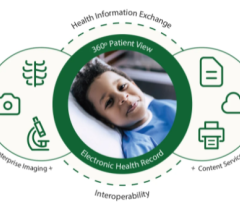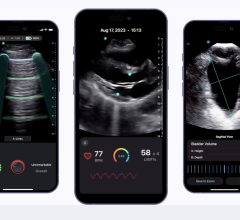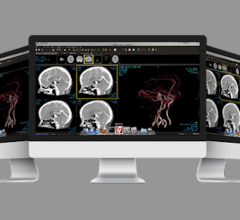
David Jaffrey is vice chairman of PHM's Radiation Oncology Department.
Princess Margaret Hospital (PMH), Canada’s preeminent radiation therapy treatment facility, annually treats more than 10,000 new patients and serves 190,000 outpatients. Long in the vanguard of looking to technology both to assist in cancer treatment and manage its business operations, PMH has since 1995 relied on IMPAC software products for the flexibility and control they provide in managing the clinical radiation oncology process. “Over the past few years, use of the IMPAC system has also allowed PMH to become filmless and paperless. Without IMPAC, we would not be able to maintain our high throughput with our high level of service,” stated Terry Michaelson, director of Information Management in Radiation Oncology. “IMPAC gives us a level of fine control in managing the details of the clinical process that our clinicians demanded as we became more electronic,” he added. Designed to emulate existing clinical processes, IMPAC software offers numerous “switches and dials” to optimize the analogous electronic processes.
Improved Therapy
Given PMH’s huge patient load, an important feature of the system is being able to place alerts on a number of parameters. For example, the software can be programmed to trigger automatic warnings that certain doses must be preceded by certain procedures. Having such alerts can help busy staff assure high quality of patient care.
“If you are able to track practically any of the key clinical parameters within the EMR and are able to place boundary values, the time and effort spent by clinicians in monitoring these values can now be spent thinking through the clinical management of the patient,” said David Jaffrey, vice chairman of PHM’s Radiation Oncology Department. “Effectively, before IMPAC, we had highly trained clinical professionals performing tasks that were repetitive and highly rules driven. This offered
a perfect scenario for automation. With IMPAC automating much of our monitoring, our clinical staff is now able to focus more on what they were trained to do — treat disease.”
The management of images is critical in radiation oncology. PMH now relies on its software to preschedule very sophisticated sequences of imaging as well as its image management. Any combination of pre- and post-treatment images, including both volumetric and planer views, can be scheduled at either the field or site level. Once these views are captured, their availability is automatically added to a list of a patient’s images, facilitating clinician review and annotation, and notification of their availability can be sent to any staff member in the clinic. “With two clicks, clinicians can retrieve and display an image,” said Michaelson. “Our electronic imaging system gives us a number of tools that improve efficiency and accuracy in reviewing images. We can view both reference and target images in a number of ways, annotate them, electronically approve or reject them and include instructions for further action all within a single environment.”
Delegated Decisions
PMH’s electronic oncological software system includes many features that expedite the analysis, tracking and overall management of dosimetric and mechanical/physical data. Changes in patient values can be tracked daily field-by-field. Values are displayed within a tabular format, and when a value changes, the system automatically highlights it to assure that it will be rapidly noted and, when indicated, further investigation is performed. An enhanced chart check feature generates a list of routinely evaluated parameters and allows PMH staff to access the portion of patient’s EMR associated with the data by simply clicking on the parameter of interest. Such efficiencies save time for many staff, especially the clinical physicist who formerly had to analyze pages of minutia before arriving at the item of interest. Obtaining information faster spares more time for PMH staff to apply their expertise in caring for patients.




 June 28, 2024
June 28, 2024 








